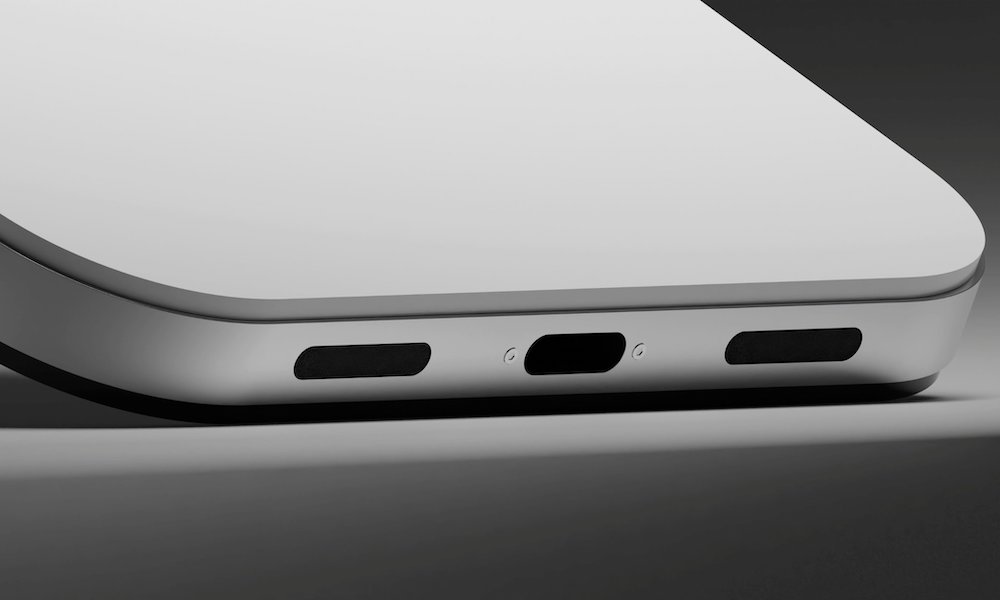‘iPhone 15’ Could Gain USB-C After All
 Credit: Apple_Tomorrow / Twitter
Credit: Apple_Tomorrow / Twitter
Toggle Dark Mode
For years, there’s been speculation as to when or if Apple would move the iPhone away from Lightning and over to USB-C. While the popular opinion has leaned toward this never happening, a reliable source says it may be in the cards for next year’s “iPhone 15.”
We already have solid information that this year’s iPhone will not get going to USB-C, but with mounting pressure from the European Union to switch all electronic devices to a common charging standard, it’s conceivably possible Apple may not have much choice in the matter.
We’ve long believed that Apple would ditch all ports entirely before going to USB-C. That would certainly meet the EU’s requirements since moving to wireless charging instead of ports is perfectly acceptable, but time may not be on Apple’s side.
Although MagSafe technology has a lot of potential and is undoubtedly Apple’s plan for the future, it’s fair to say the world isn’t quite ready for a port-free iPhone.
After all, even though Apple has wireless charging covered, that’s only part of the equation. The biggest obstacle to eliminating all ports would still be CarPlay. Even though Wireless CarPlay has been catching on more in recent years, it’s still far from ubiquitous. It’s not even a matter of car manufacturers dragging their heels; the problem is that Bluetooth isn’t fast enough to handle CarPlay, so vehicles need built-in Wi-Fi to support it. Most vehicles still don’t include Wi-Fi as a standard feature.
There are ways that Apple could work around this, but most of them would be pretty kludgy and consumer-unfriendly. For example, creating a MagSafe CarPlay adapter or Wi-Fi CarPlay adapter would require customers to purchase an extra accessory for a feature that’s traditionally been available out-of-the-box.
Even though Apple isn’t afraid to remove ports when it suits its purposes, it tends to take a somewhat measured approach. The 3.5mm port was pulled from the iPhone 7 at the same time that Apple released its first AirPods, and wireless headphones were already increasing in popularity. Apple also built a 3.5mm to Lightning adapter that was inexpensive enough that it could include one in every box to tide users over.
Wireless CarPlay hasn’t reached nearly the same widespread level of usage. Giving away a free MagSafe to CarPlay adapter with every iPhone would likely eat into Apple’s bottom line even more than giving up the royalties it gets from its Made-for-iPhone accessory partners who use the Lightning port.
However, the new EU regulations are set to force Apple’s hand. It’s going to have to get rid of the Lightning port one way or another, whether that’s with MagSafe or USB-C. While Apple will likely have until 2024 before it’s actually required to make any changes, the fall release of the ‘iPhone 15’ next year would put it perilously close to that line.
So, with all that in mind, it’s worth taking veteran analyst Ming-Chi Kou’s latest revelation more seriously. According to Kuo, the 2023 iPhone will abandon the Lightning port and switch to USB-C.
Kuo notes that this should also improve transfer and charging speeds, although it’s worth noting that these improvements don’t require a switch to USB-C to accomplish. The iPhone 13 Pro Max can already charge at speeds of up to 27W over Lightning, and Apple’s choice to limit the iPhone’s Lightning port to USB 2.0 speeds is just that — a choice.
Before Apple made the switch to USB-C, early iPad Pro models supported USB 3.0 transfer speeds over Lightning without any problems. Apple even sells a Lightning to USB 3 Camera Adapter to take advantage of these speeds. Despite the word “Camera” in the name, the USB-A connector can be used with any compatible USB device, from keyboards and music accessories to memory sticks and external hard drives.
As a supply chain analyst, Kuo’s information comes from Apple’s suppliers, so it’s not a direct indication of Apple’s plans. However, due to the sheer quantity of iPhones manufactured each year, a switch to USB-C would result in Apple requiring a massive increase in the number of components needed to support the new port, and that’s a trend that’s pretty hard to miss.
[The information provided in this article has NOT been confirmed by Apple and may be speculation. Provided details may not be factual. Take all rumors, tech or otherwise, with a grain of salt.]







